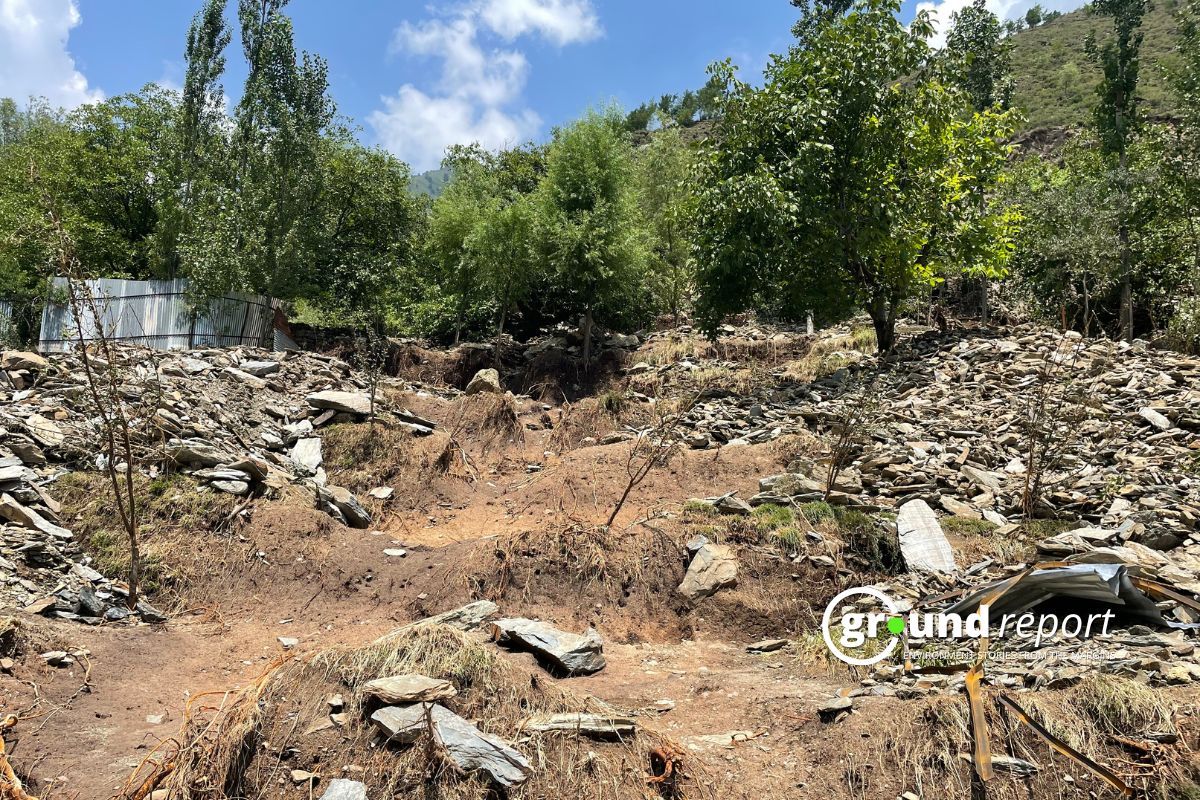As glaciers and ice sheets melt due to global warming, scientists are racing to understand and predict sea level rise. A new study from researchers at the Massachusetts Institute of Technology examines what controls the flow of glacial ice, a key factor influencing ice loss to the oceans.
Glacier flow depends on ice microstructures
The study shows that the flow of glaciers depends heavily on microscopic deformations and defects within the ice. The study was published this week in the Proceedings of the National Academy of Sciences. Using this relationship, the MIT team developed a new model to map and forecast ice flow patterns across the Antarctic Ice Sheet.
“The study shows the effect of microscale processes on macroscale behaviour,” said lead author Meghana Ranganathan, who conducted the research as an MIT graduate student. “These mechanisms occur at the scale of water molecules and can affect the stability of the West Antarctic Ice Sheet.”
Glacier flow models assume uniform behaviour, but new MIT findings reveal significant variations in how the Antarctic Ice Sheet flows and deforms in response to rising temperatures and stresses.
The study focuses on two key microscopic mechanisms that control glacial ice deformations and flow – dislocation creep, where molecule-sized cracks propagate through the ice crystals, and grain boundary sliding, where individual ice crystals slide against their neighbours.
Previous lab experiments showed that ice flow and deformation when dislocation creep dominates over grain boundary sliding at the microscopic level. Taking insights from those studies, MIT researchers developed a model to estimate the sensitivity of glacial ice to flow depending on which microscopic deformation process.
Model predicts ice flow sensitivity
The model takes multiple inputs such as temperature, ice crystal size, and estimated ice mass to calculate whether dislocation creep or grain boundary sliding is the dominant deformation mechanism. Based on that calculation, it estimates the flow sensitivity of that part of the ice sheet.
The team applied the model to observational data from across Antarctica and generated a map showing significant variations in ice flow sensitivity across the ice sheet, contradicting the long-held view of a uniform ice slab.
“This dramatically alters the climate conditions for marine ice sheets to become unstable and drive rapid sea-level rise,” Ranganathan said.
When the researchers compared their model’s estimates to actual satellite measurements of ice flow, they found a close match, validating the new framework.
“As climate change thins glaciers, it could affect the ice’s sensitivity to stress,” Ranganathan noted. “The expected instabilities in Antarctica could be very different, and we can capture those differences using this model.”
“Part of it’s a scaling problem,” Ranganathan explains. “A lot of the fundamental mechanisms that cause ice to flow happen at a really small scale that we can’t see. We wanted to pin down exactly what these microphysical processes are that govern ice flow, which hasn’t been represented in models of sea-level change.”
Study bridges lab and glaciers
Co-author Brent Minchew, an associate professor of earth and planetary sciences at MIT, said the study bridges the gap from microscopic ice processes studied in the lab to real-world glacier and ice sheet behaviour.
“This is the first study to evaluate ice stability in the natural environment,” Minchew said. “It will feed into our understanding of catastrophic sea-level rise.”
Scientists incorporated actual observations from various locations across the Antarctic Ice Sheet into their model, using data previously recorded by others, such as local ice height, ice crystal size, and ambient temperature. The model’s estimates allowed the team to create a map of ice sensitivity to stress across the Antarctic Ice Sheet. This map closely matched satellite and field measurements taken over time, indicating that the model could reliably predict future glacier and ice sheet flow.
“Current models for sea-level rise assume a single value for the sensitivity of ice to stress and hold this value constant across an entire ice sheet,” Ranganathan explains. “What these experiments showed was that actually, there’s quite a bit of variability in ice sensitivity, due to which of these mechanisms is at play.”
Ranganathan stated, “As climate change starts to thin glaciers, that could affect the sensitivity of ice to stress. The instabilities that we expect in Antarctica could be very different, and we can now capture those differences using this model.”
As the planet warms, accurately modelling and anticipating glacier instability and resulting sea level rise will be crucial for coastal communities. The new MIT research provides a framework for doing so.
Keep Reading
Part 1: Cloudburst in Ganderbal’s Padabal village & unfulfilled promises
India braces for intense 2024 monsoon amid recent deadly weather trends
Support us to keep independent environmental journalism alive in India.
Follow Ground Report on X, Instagram and Facebook for environmental and underreported stories from the margins. Give us feedback on our email id greport2018@gmail.com.
Don’t forget to Subscribe to our weekly newsletter, Join our community on WhatsApp, and Follow our YouTube Channel for video stories.










